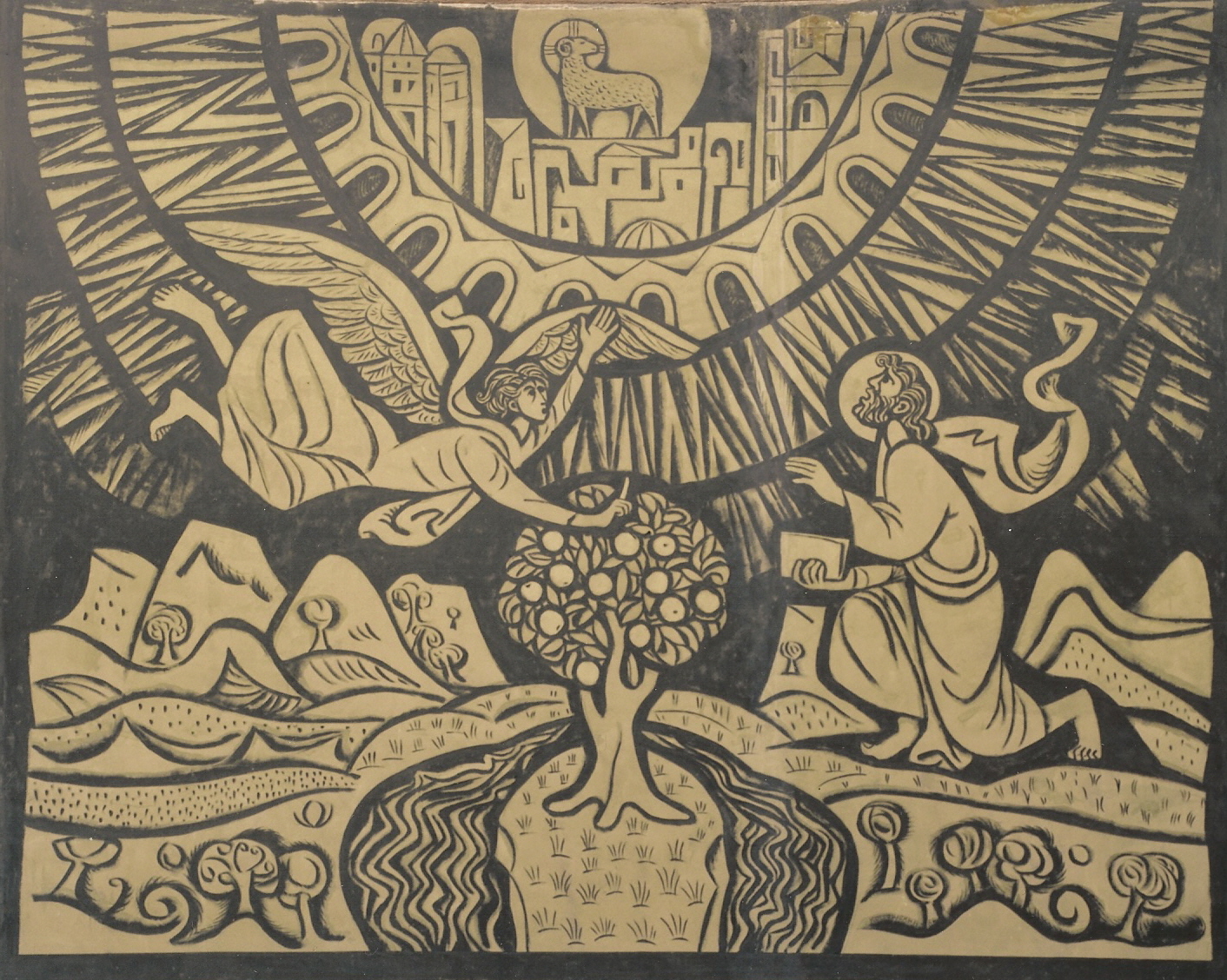St Benet's was first built as a large Church of England mission church in 1872 and was destroyed by bombing in 1940.
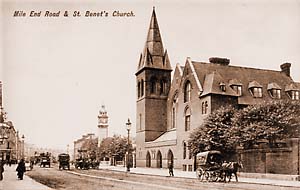
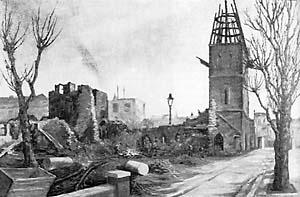
St Benet's was rebuilt in 1962 as the University of London chaplaincy.

In 1964 the interior walls of the circular domed chapel were decorated with a series of unique murals, designed and executed by the renowned Polish ceramicist, Adam Kossowski.
In June 2014 the chapel and murals received a Grade II listing from English Heritage.
The murals feature seven scenes from the last book of the Bible, the Revelation of St John and form one of the most impressive examples of 'sgraffito work in England. 'Sgraffito is an ancient technique which essentially involves scraping through a thin layer of soft plaster to reveal a darker base.
The book of Revelation was written at the end of first century AD during the reign of the Roman Emperor Domitian, a period of extreme suffering for the early church. The readers/viewers of Revelation are encouraged to see their present suffering against the whole background of human history and eternity. It was the underground resistance literature of its time, using elements of symbolism both to hide its message from the persecutors and to reveal a message of ultimate triumph to the faithful.
The first panel depicts the author, St John, in exile on the island of Patmos, receiving his vision and writing letters to the seven churches of Asia (Revelation, chapters 1 to 3).
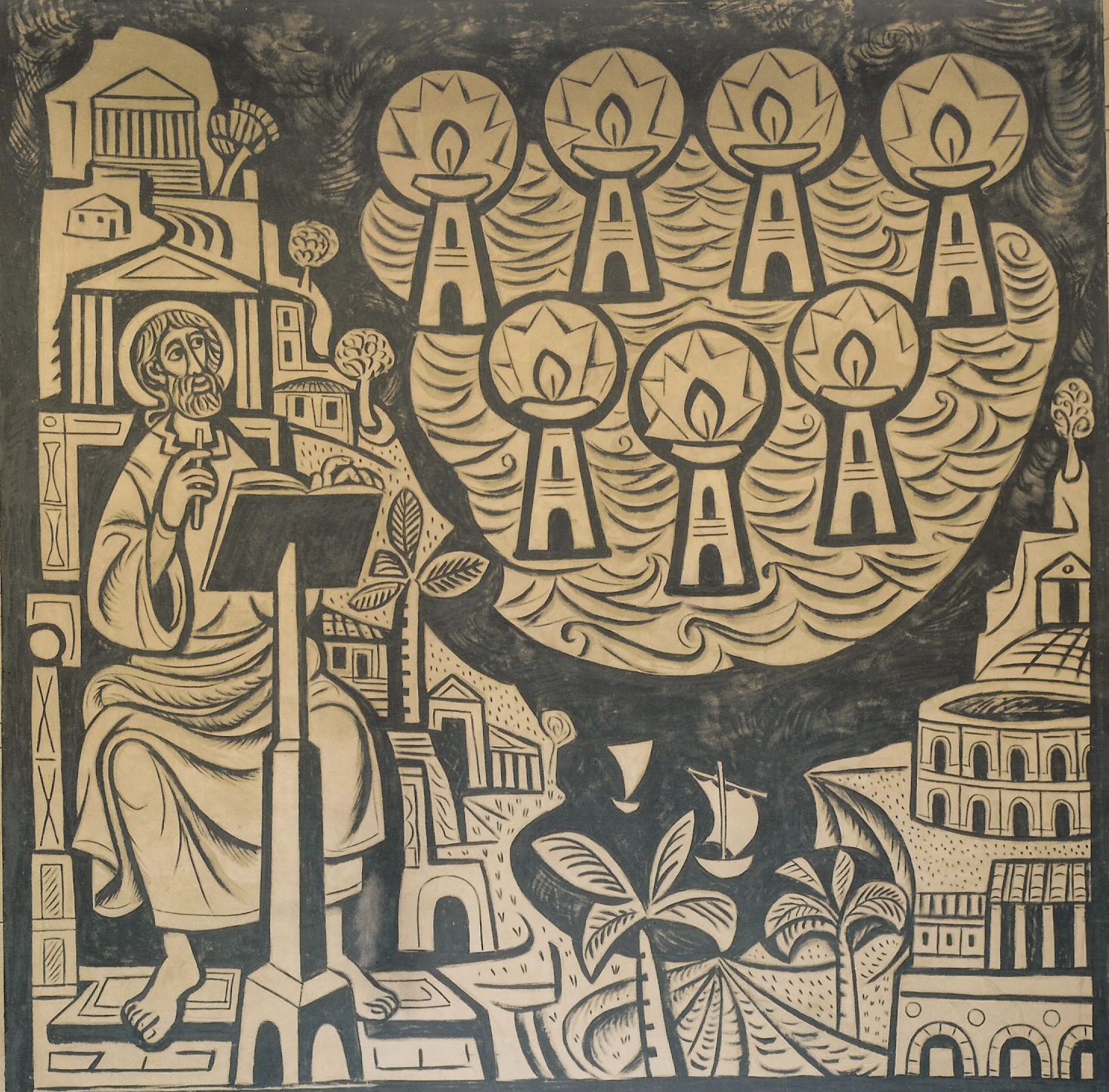
The second panel represents the unseen reality of worship in heaven (chapters 4 and 5). Jesus Christ, once sacrificed as the Lamb of God, is now acknowledged by all creation as the centre and fulfillment of God's saving plan.
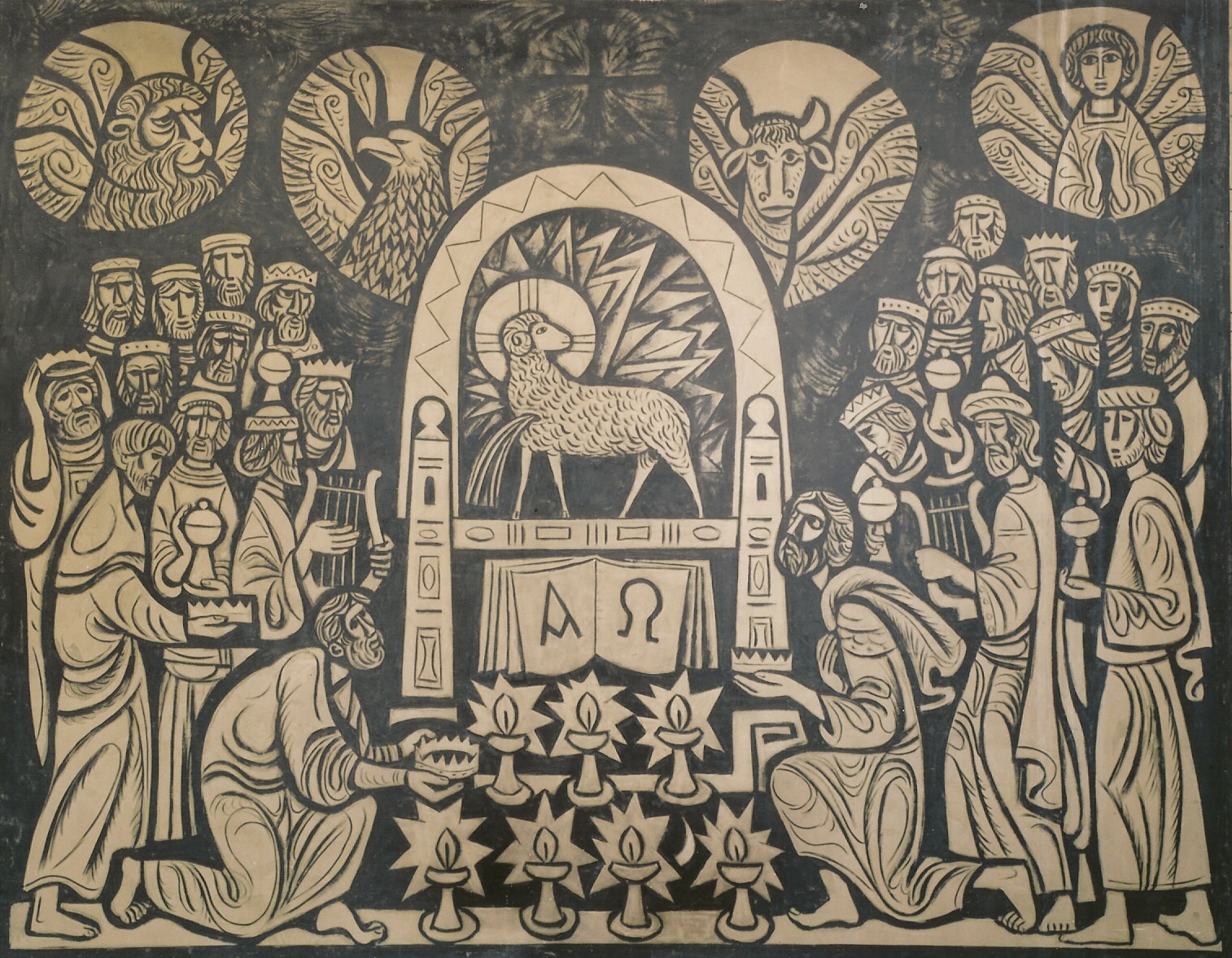
The third panel - with its four horsemen of Conquest, War, Famine and Death - shows the first series of seven judgements upon imperialism, its opposition to God and its abuse of power (chapters 6 and 7), which lead to various forms of disaster and suffering.
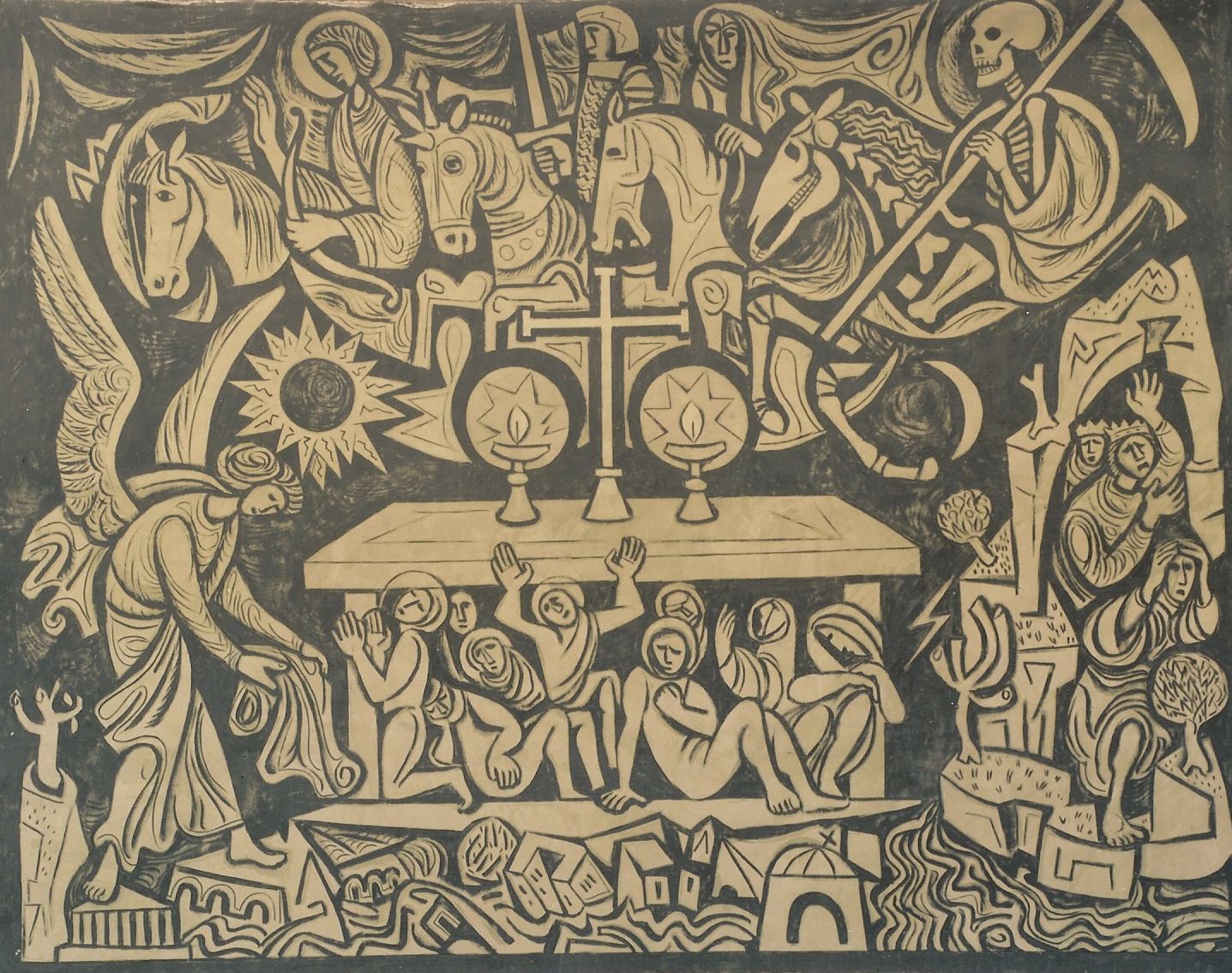
In the fourth panel, we see seven angels with trumpets announcing a second series of judgements, and an eighth who carries incense signifying the prayers of the faithful (chapter 8).
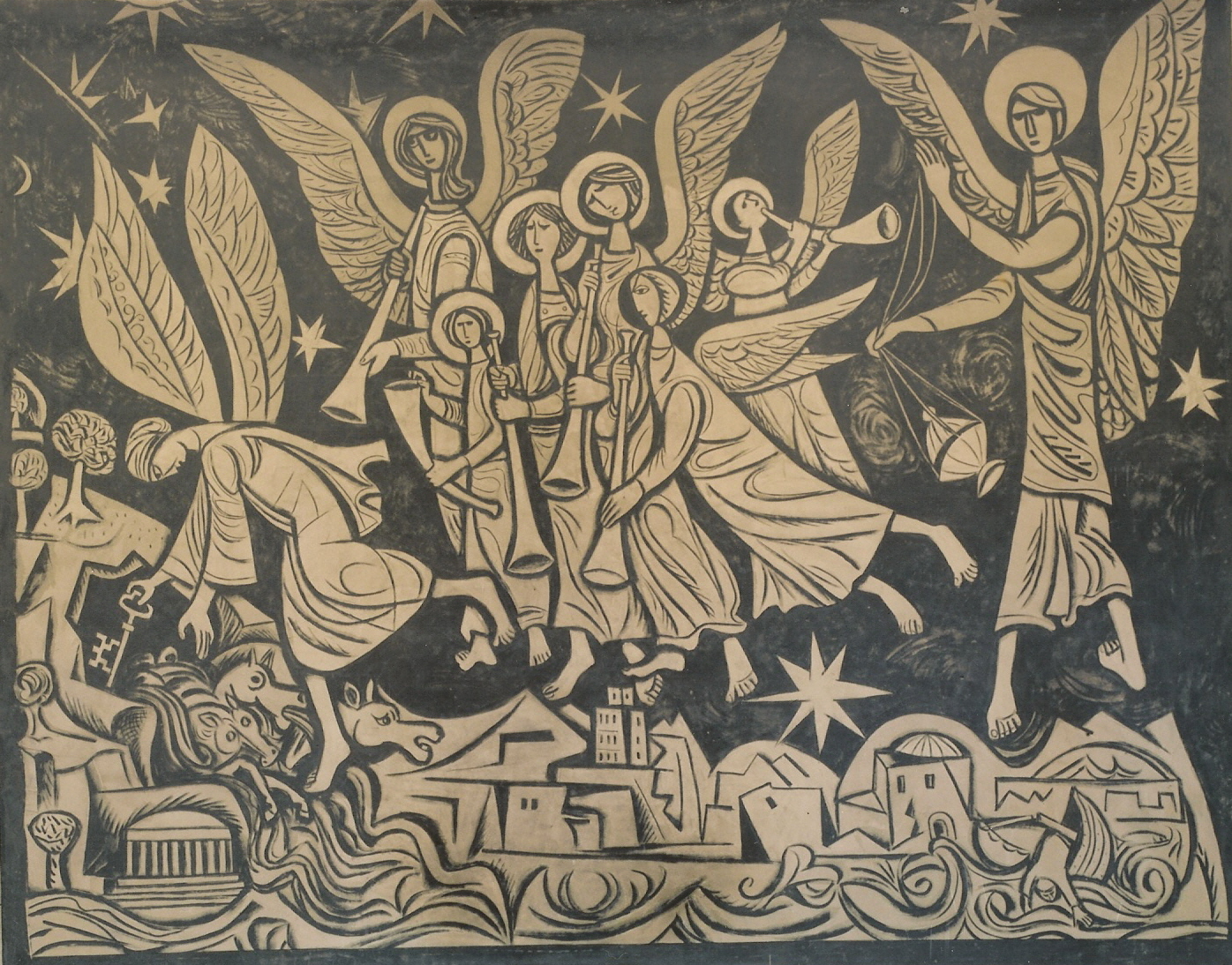
The fifth panel reveals a war in heaven between a woman about to give birth to a son and a seven-headed dragon who threatens to destroy the son. In the end the dragon is defeated by Michael and his army of angels (chapter 12).
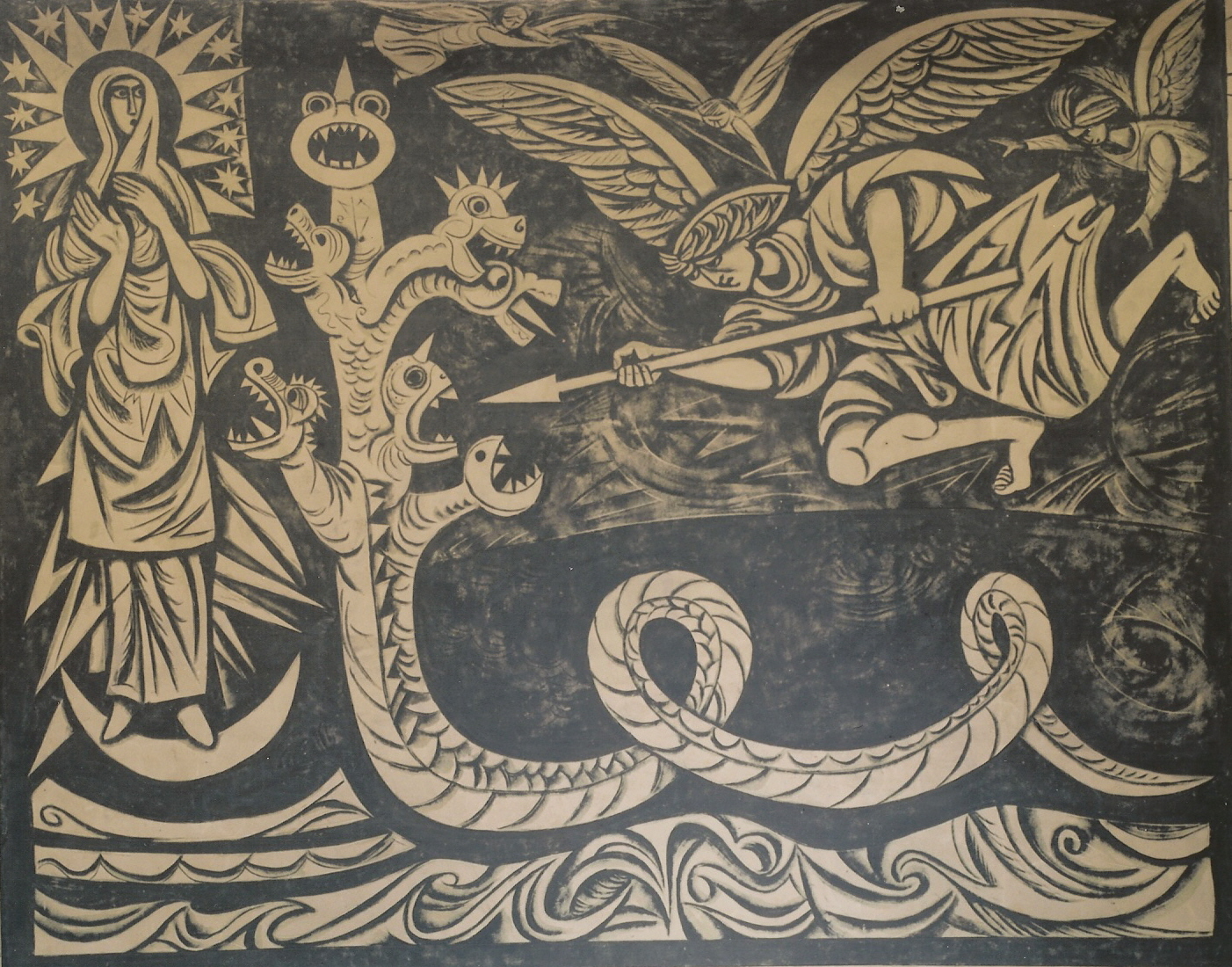
The sixth panel depicts Jesus Christ, King of Kings, seated in majesty and authority, and holding the Book of Life prior to the Last Judgment (chapter 20)

The seventh panel portrays the final part of John's revelation - a victorious image of the eternal city, the New Jerusalem, and its associated images of the Tree of Life and River of Life (chapter 21). Christ the Lamb of God is the light at its centre.
